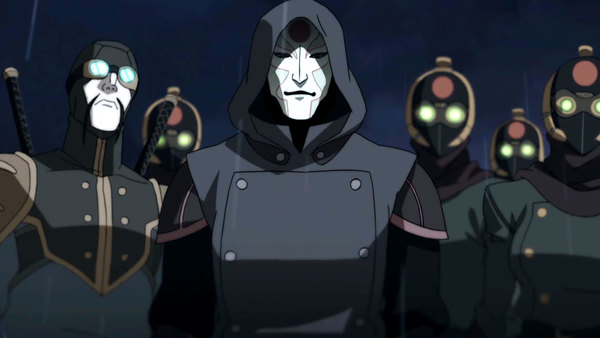Five years ago, The Legend of Korra first aired on Nickelodeon in the US, as a sequel series to the much-beloved Avatar: The Last Airbender. Â While not the critical smash that A:TLA was, for me Korra stands up well as an amazing piece of storytelling, with gorgeous visuals to boot.
In case you’re not familiar with either series, the world of Avatar takes cues from ancient Indian, Asian and various indigenous cultures around the world. Â The twist is, some people are born with the ability to ‘bend’Â earth, fire, air or water, and there is always one Avatar that can learn to bend all four. Â When the Avatar dies, their spirit is reincarnated to the next nation in a cycle (in the same order of elements above). Â As you might guess, A:TLA follow an airbender Avatar (Aang), and The Legend of Korra follows his immediate successor, Korra who is a waterbender.
Right away, the new series made sure to show us how different Korra herself would be from Aang.  Aang had started out as a reluctant hero – he had run away from the Avatar responsibility, she dove in head-first.  Aang had been contemplative and looked to solve problems peacefully first. Korra would often punch first and ask questions later.  In fact, it’s one of Korra’s central issues she has to overcome, as that sort of personality is diametrically opposed to airbending principles.  Throughout the first season (Book One: Air), Korra struggles to connect with her spiritual self, butting heads with Aang’s son Tenzin as he tries to teach her to airbend.  It’s very parental, and it’s something most tweens and teens can relate to.  In fact, if there’s one thing that seemed to bother some fans that grew up with Aang, it’s that the new show definitely skewed older with the issues that were tackled.
One of my favorite things Legend of Korra did was realistically advance the world from the previous show.  On Avatar: The Last Airbender, we saw the beginnings of industrialization.  There were rudimentary mechanized vehicles and ships, and it would’ve been easy for the show to just stick with that, but they went full industrial revolution in Republic City.  The problems facing the world also matured.  Book One’s villain, Amon, made you take a hard look at how you treat the ‘others’ in your life, especially when you have more power than they do.  Book Three and Four swung the pendulum between chaos and order, showing how bad things can be at both ends of the spectrum.

Another aspect I love about Legend of Korra is how the relationships grow over time. Â Sure, it starts out with typical teen angsty love triangles, but it ends with a some amazing friendships and even a same-sex couple that goes about as far as Nickelodeon would let them. Â And that develops over years, by overturning the media tendency to have women be rivals for the affections of whatever men happen to be around. Â Korra and Asami have every reason to dislike each other, but end up close friends, and finally more.
Legend of Korra does what any sequel or continuation should do – it deepens the lore, pays homage to the past but isn’t beholden to it, and only serves to improve the Avatar legend.  If you never gave Korra a shot, you owe it to yourself to try it now.  The first three books (seasons) are available on Amazon Prime for free though you do need to buy Book Four (which is totally worth it).


Leave a Reply